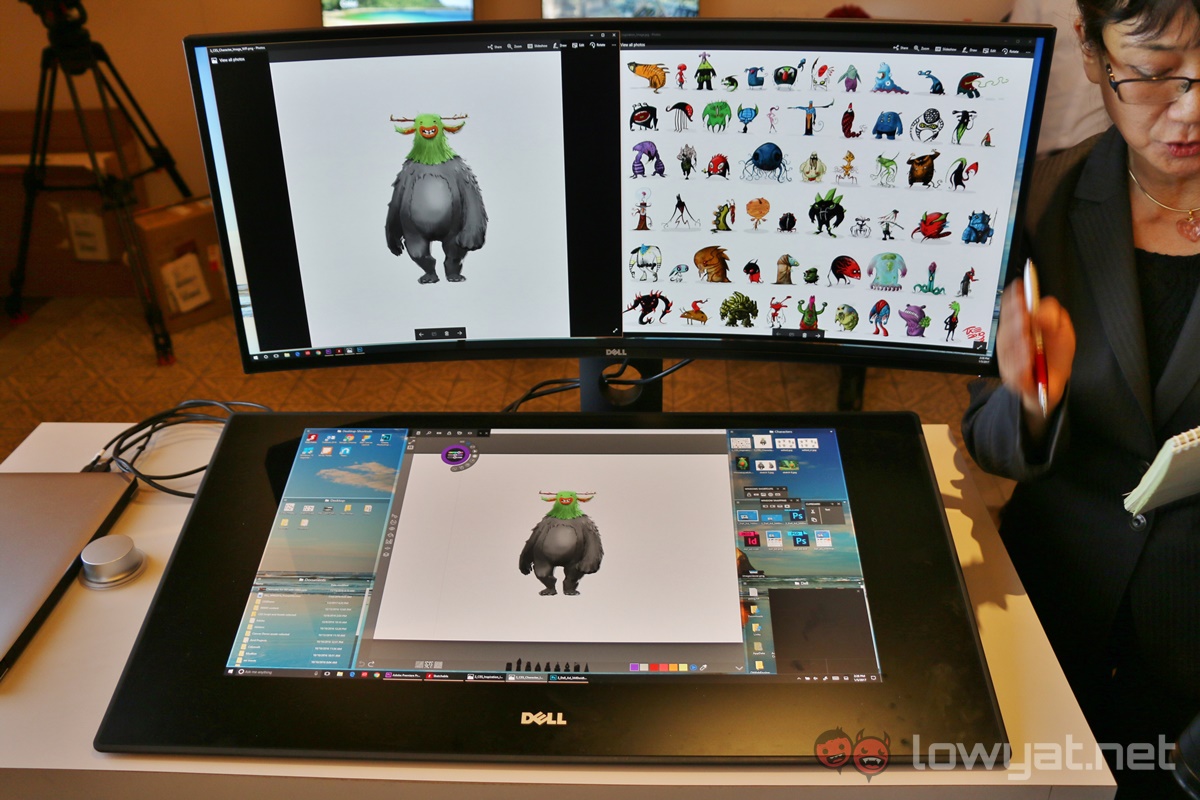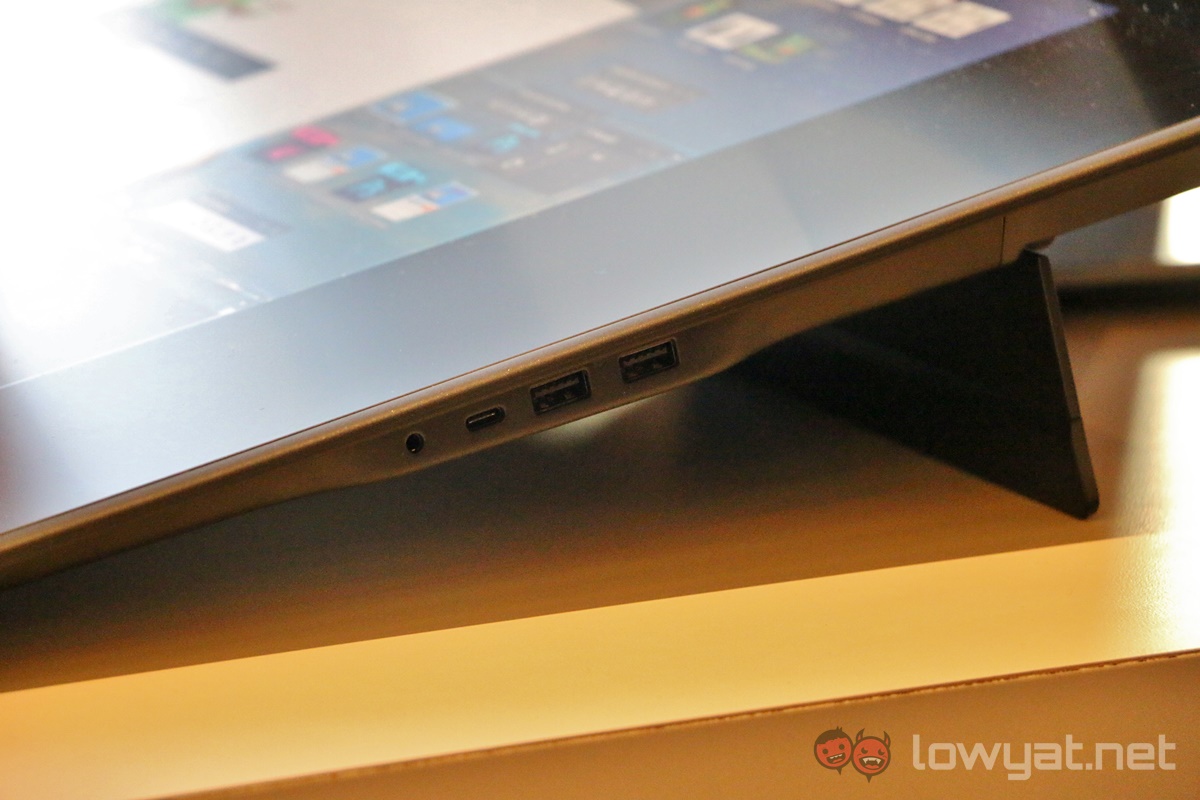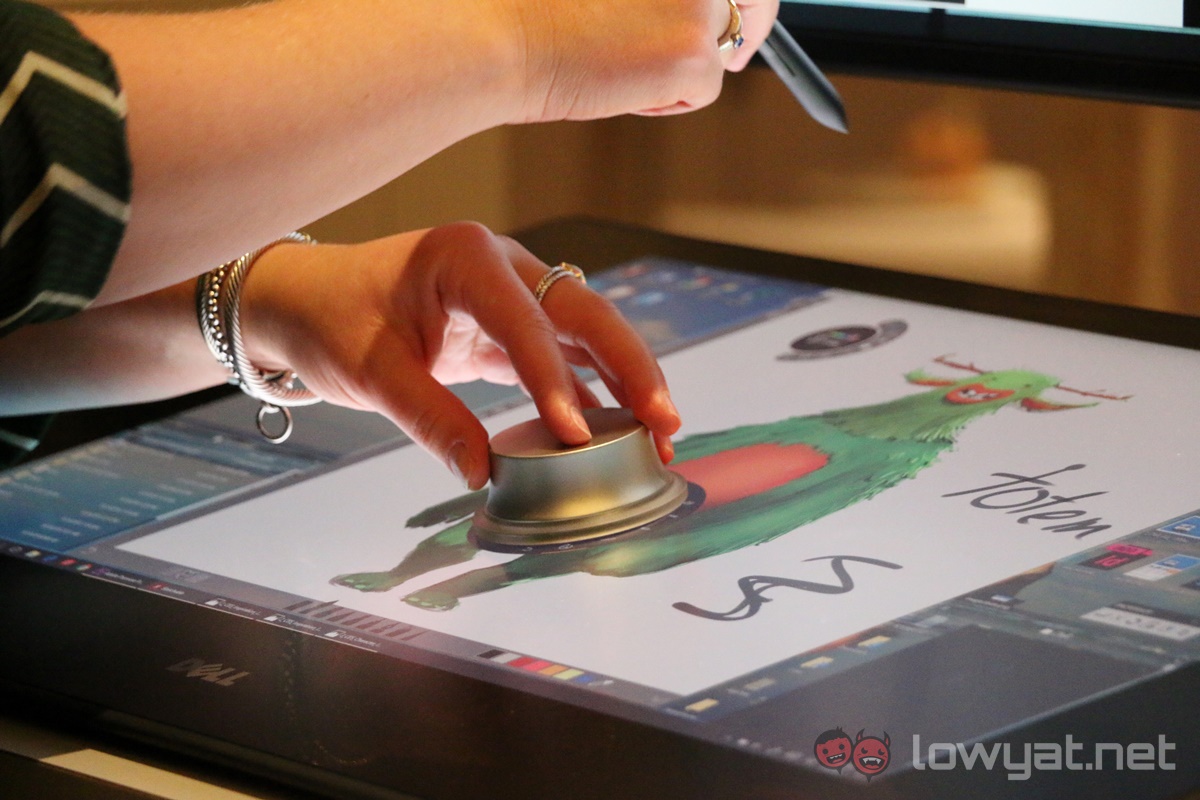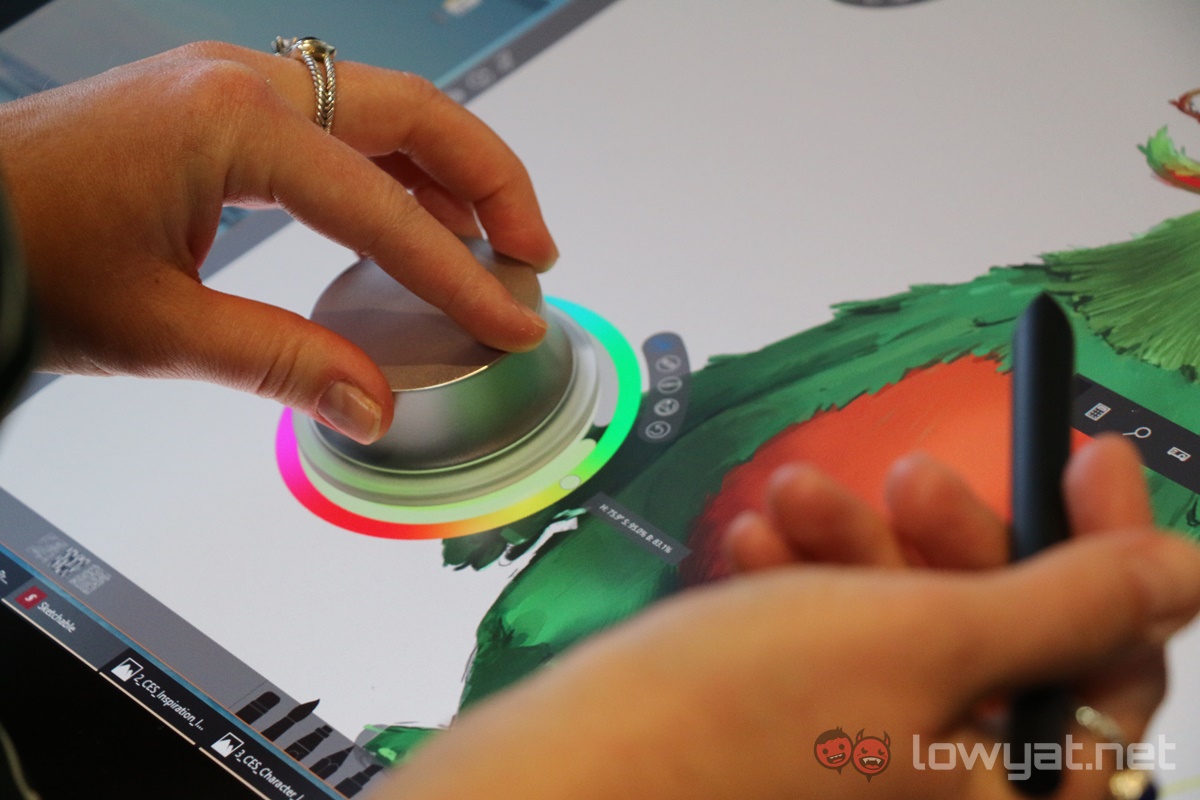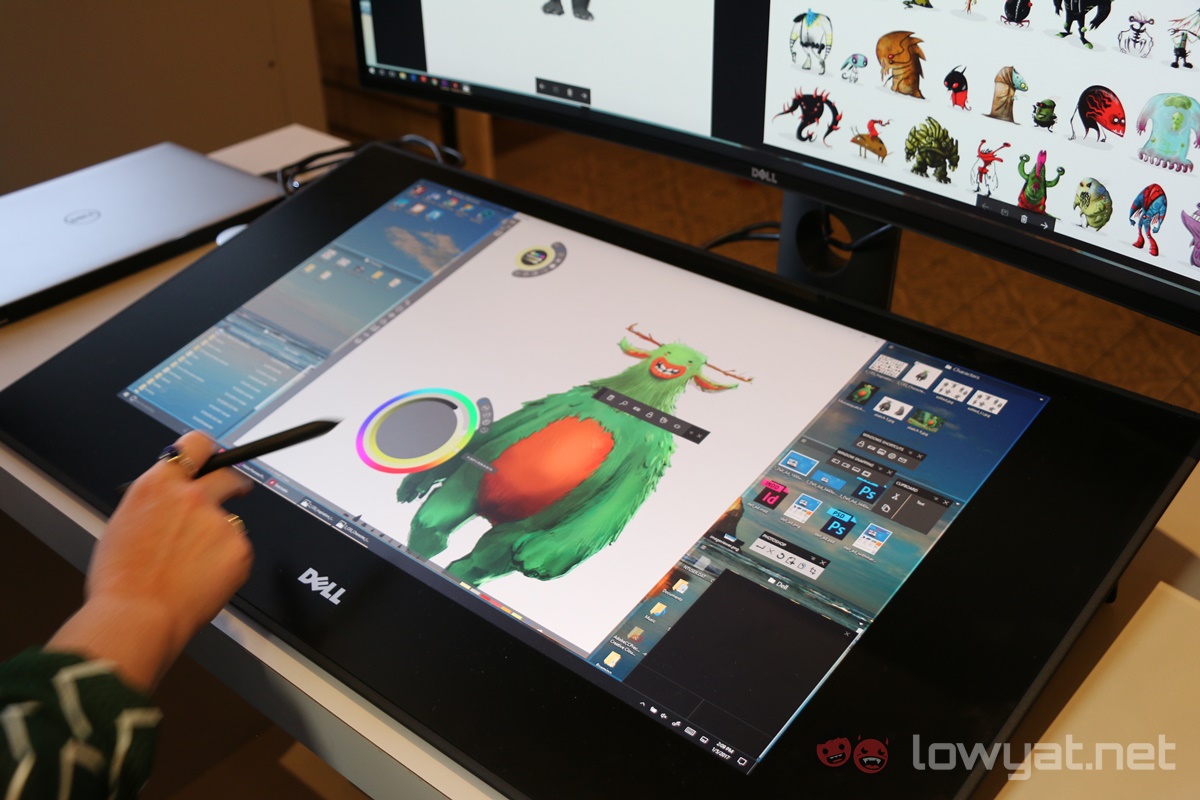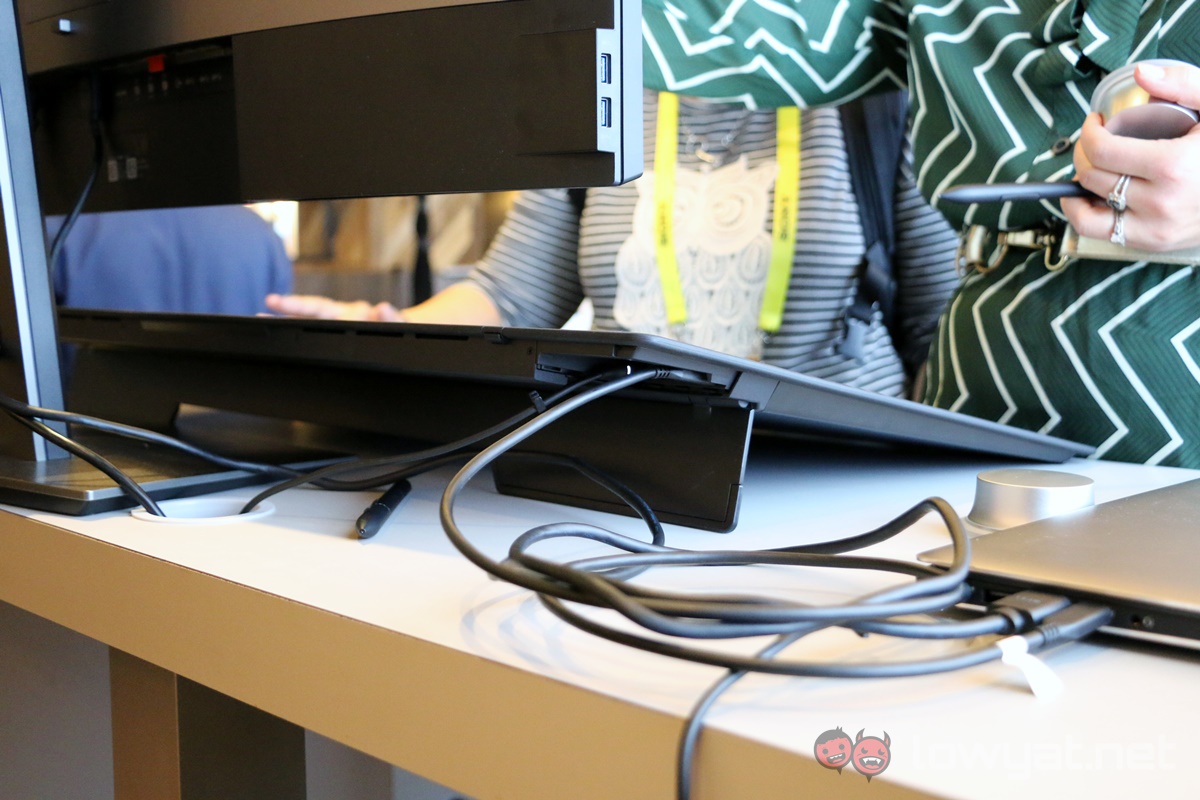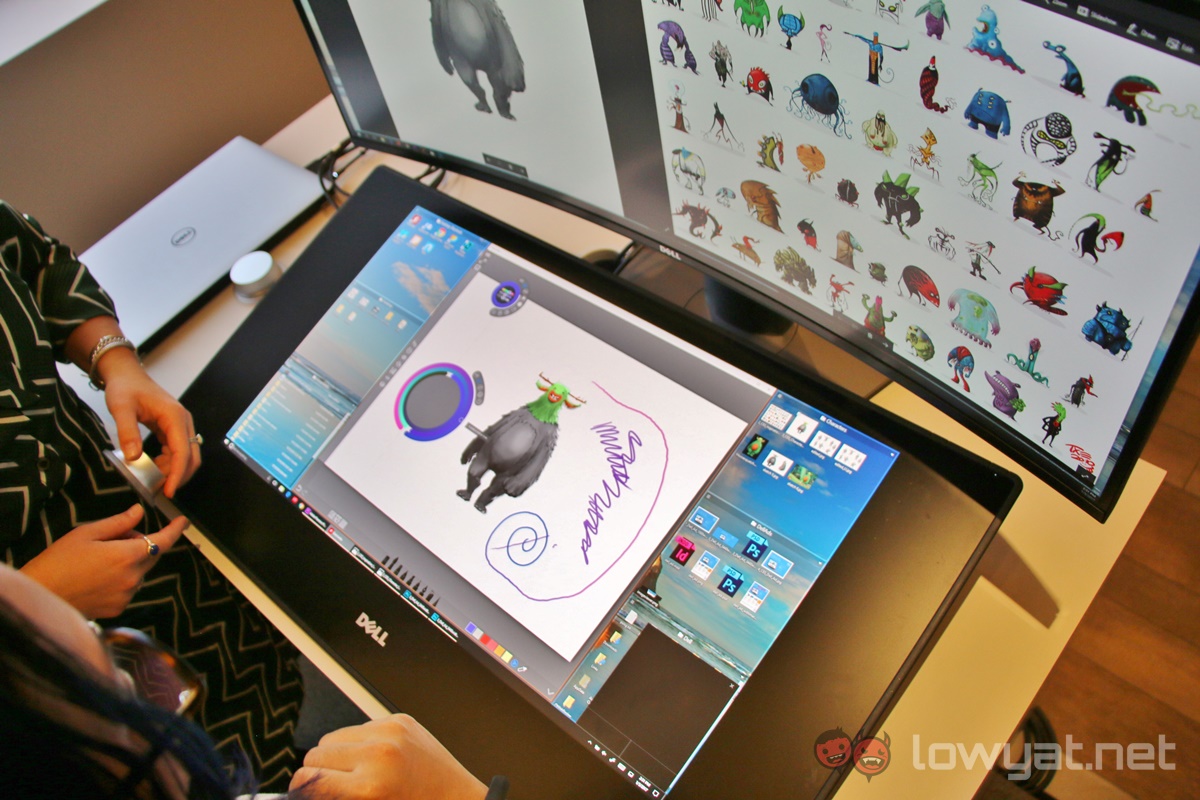When Microsoft began making its own hardware, it set out on a mission to showcase the boundaries of what makes a personal computer, and courageously push past those boundaries. It also encouraged fellow PC makers to build upon the footprint of Microsoft’s products and create new, alluring devices.
Dell’s new Canvas 27 is exactly that. Where Microsoft designed an premium all-in-one designed for creative professionals with the Surface Studio, Dell also had a similar vision, but its execution is much more practical.
The Canvas 27 is essentially a secondary display, measuring 27 inches across with a modest 2560 x 1440 resolution. It is designed to complement a primary display, and is meant to be placed where the keyboard and mouse are.
It has a kickstand to prop the display up at a comfortable angle, while the large side bezels lets you rest your arms when you need to. Two USB ports, a USB Type C port, and a 3.5mm audio jack on the side lets you attach peripherals where needed.
What’s really interesting about the Canvas and how it’s different from the Surface Studio is with the execution. Dell designed the Canvas from the ground up to be an accessory; the rationale being that creative professionals would already have their work machines capable of running multiple displays.
That allows the Dell to price the Canvas at a much lower price point from the competition. Where Microsoft prices the Surface Studio from $2,999 (about RM13,400), a Dell representative says that while pricing isn’t confirmed just yet, the company expects to price it at $1,799 (about RM8,050).
Perhaps the biggest similarity between the Surface Studio and the Canvas 27 is with the puck-like accessory both have. The Totem is almost exactly what the Surface Dial is for the Canvas, and in terms of hardware they are essentially the same piece of gear that serves the same intuitive purpose.
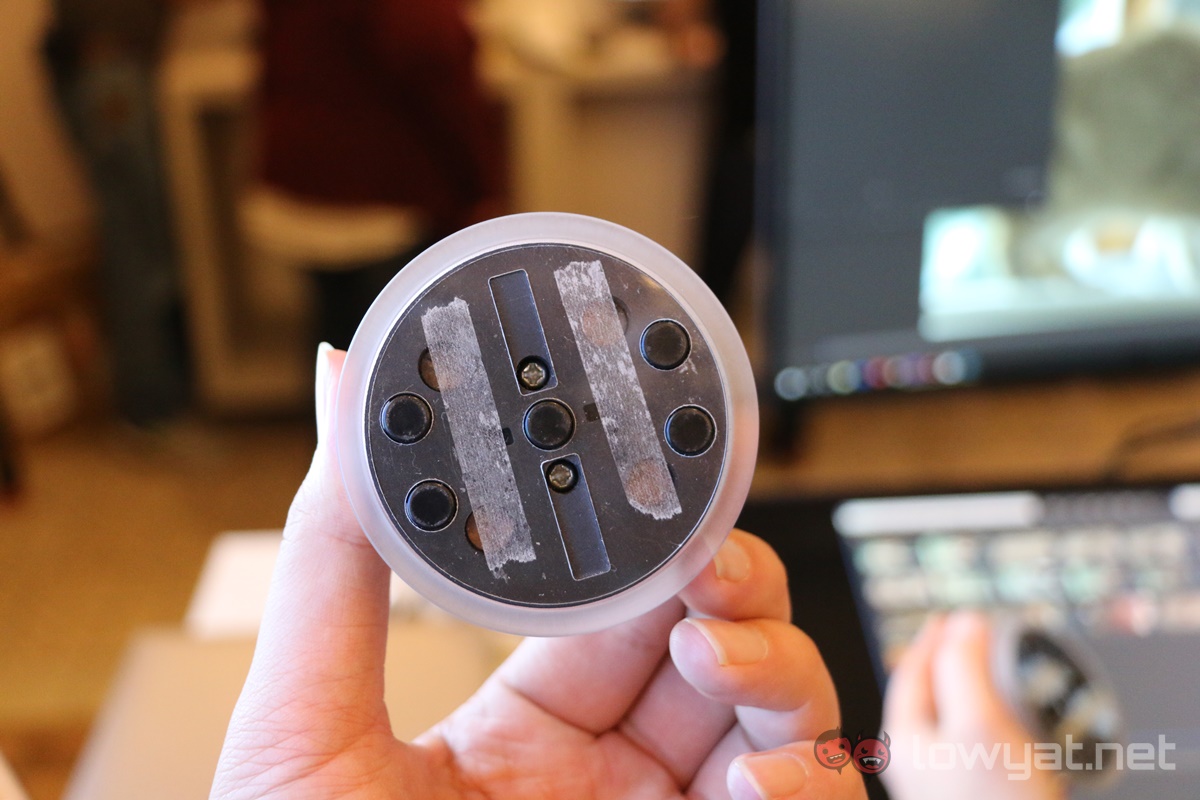 Dell says the bottom portion is still not yet finalised, hence the presence of tape.
Dell says the bottom portion is still not yet finalised, hence the presence of tape.
The Totem isn’t powered by any means; it’s essentially just a puck-shaped “controller” with five rubber touch points in unique pattern. It is this pattern that allows the video controller to enable the Totem on-screen functions, which has a contextual, circular UI that’s very similar to the Surface Dial’s.
There are some UI elements unique to the Canvas, too. Users can pin apps on all four corners of the display, while tiny shortcut strips provide easy access for quick commands.
A Dell rep also mentioned that while it isn’t yet ready, Dell is already working on supporting the Surface Dial to be used on the Canvas’ display. This means developers need not create multiple versions of the same software to support the Totem and Dial.
Also, while Dell currently has no plans yet, a rep also says that this approach allows Dell to craft Canvas models with different screen sizes to fit different work spaces and needs.
Regardless, the Dell Canvas 27 will ship in the US from April 2017 onwards, with other markets to follow.
Follow us on Instagram, Facebook, Twitter or Telegram for more updates and breaking news.



